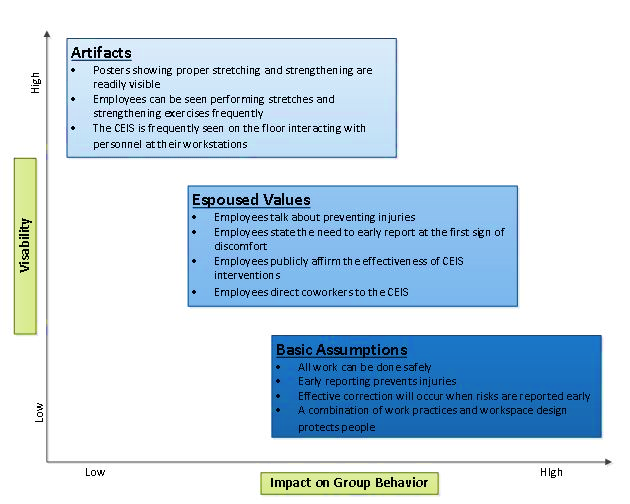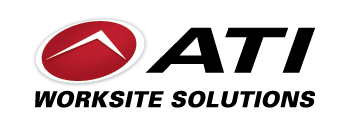Contributed by: Chet Brandon CSP, CHMM Vice President of Operations & Corporate Safety Officer ATI Worksite Solutions
The Liberty Mutual Research Institute recently published its 2015 Annual Report of Scientific Activity. The report details the mission, goals and outcomes of the Institute’s work. Liberty Mutual has a long history of meaningful scientific inquiry into the concepts and methods of protecting people and property. I like to keep abreast of the work at the Institute to identify innovations that can help further the quest for Safety Excellence.
One research report in particular caught my eye: Impact of Safety Climate Beyond Safety Outcomes. In this study the focus was on whether safety climate is linked to other important business outcomes (Liberty Mutual, P. 13). In his seminal work on the subject of safety climate, Dov Zohar defined safety climate as a unified set of cognitions (i.e. perceptions) regarding safety aspects of the organization that employees participate in (Zohar, 1980). These perceptions have a profound influence on guiding and directing on-the-job behavior. If your organization is interested in utilizing safety climate concepts I encourage you to read Dr. Zohar’s paper (see references).
The Occupational Safety and Health Administration has long held that in addition to savings from the direct cost of injuries, “employers often find that changes made to improve workplace safety and health can result in significant improvement in their organizations productivity and financial performance” (OSHA, 2016). The Liberty Mutual research lends further validation to this perceived benefit of having a high performing safety and health program in your workplace.
Through our work at ATI Worksite Solutions with world-class organizations, we have directly observed that the correlation between a positive safety climate and organizational success (safety, productivity & cost) exists. Our comprehensive services, while not a “low cost” solution, are uniquely effective and reproducible in controlling the complex issues and outcomes of musculoskeletal injuries. Our typical clients are highly committed to providing safe, healthy and productive workplaces for their employees. They see expenditures on effective solutions as an investment in success. Industry front-runners such as these understand that it takes the commitment of resources (time, talent & treasure) to create a positive safety climate. The savvy leaders of these businesses also understand that the 4 to 1 Return on Investment frequently obtained from early intervention services is a powerful advantage in their competitive business landscape.
Through our work with such innovative organizations, we have the unique opportunity to benchmark levels of commitment and success regarding safety and health among our clients for the identification of best practices. We notice that when strongly positive safety and health perceptions (safety climate) are present in the culture of a client’s work site, the organization is performing above average in terms of safety, production and financial measures. Our core methods of Early Intervention add to the safety climate by establishing and growing the Early Reporting Culture ™. This is a culture marked by (Brandon & Byrne, 2015):
A decreased threshold of perception for developing injury situations.The need to take immediate action to bring risk levels down to acceptable levels. The assumption that reports of elevated risk will be effectively acted upon.The timely delivery of effective solutions to reduce elevated risks.A continuous awareness of the risk potential in situations.
In a recent study of an early intervention program start up for a client in the Utility Industry, after 6 months of program implementation and operation, 85% of all employees found the follow through on injury risk reduction action to be effective (ATI Worksite Solutions, 2016). It has been well proven that employee culture is most influenced to change when a new activity is proven to be the best solution to the group’s problem (Schein, 1999). Our methods, coupled with the highly trained Certified Early Intervention Specialist™ (CEIS)™ personnel we employ, frequently drive already highly effective safety and health cultures to new levels of emphasis on preventing injuries. The illustration below adds further detail to the concept of the Early Reporting Culture.

Illustration: The Characteristics of the Early Reporting Culture
This illustration shows the characteristics of the Early Reporting Culture expressed in the 3 Levels of Culture proposed by Schein (1999). The illustration is adapted from Brandon & Byrne, 2015.
My purpose with this post was to acknowledge ongoing safety climate research that continues to show the wide-ranging benefits of creating a positive safety climate. We discussed the origin of the concept of safety climate and the most recent contributions on the subject that aid safety and health professionals in applying it. ATI Worksite Solutions has deep experience assisting clients to new levels of positive safety climate by harnessing the power of the Early Reporting Culture.
References:
ATI Worksite Solutions. (2016). Internal Correspondence, ATI Worksite Solutions Rollout Survey. ATI Worksite Solutions, Indianapolis IN.
Brandon, C., & Byrne, M. (2015). Early Intervention Methods Bridge the Gap Between Reactive and Proactive Injury Prevention Systems. In ASSE Professional Development Conference and Exposition. American Society of Safety Engineers.
Liberty Mutual Research Institute. (2016). Liberty Mutual Research Institute Annual Report of Scientific Activity. Retrieved from: https://www.libertymutualgroup.com/about-liberty-mutual-site/research-institute-site/Documents/2015%20AR.pdf Retrieved on: 5/31/2016, Liberty Mutual Insurance, Boston MA.
OSHA. (2016). Business Case for Safety & Health. Retrieved from: https://www.osha.gov/dcsp/products/topics/businesscase/benefits.html, Retrieved: 5/31/2016. United States Department of Labor, Washington D.C.
Schein, E. H. (2009). The Corporate Culture Survival Guide. San Francisco, CA: Jossey-Bass.
Zohar, D. (1980). Safety climate in industrial organizations: theoretical and applied implications. Journal of applied psychology, 65(1), 96.
